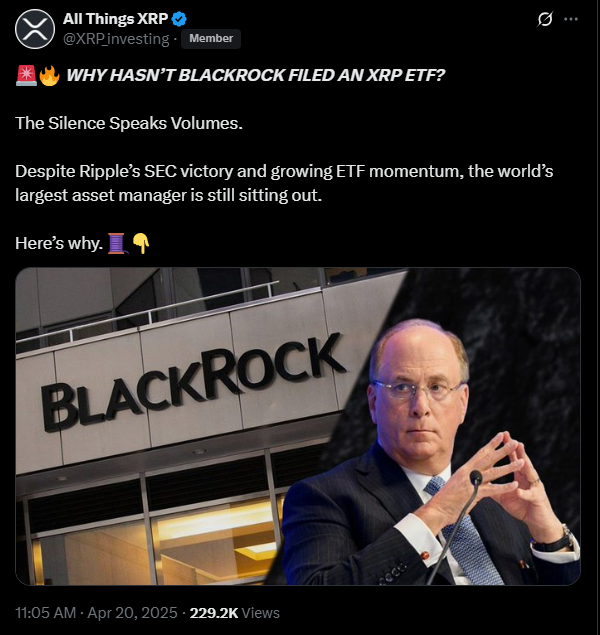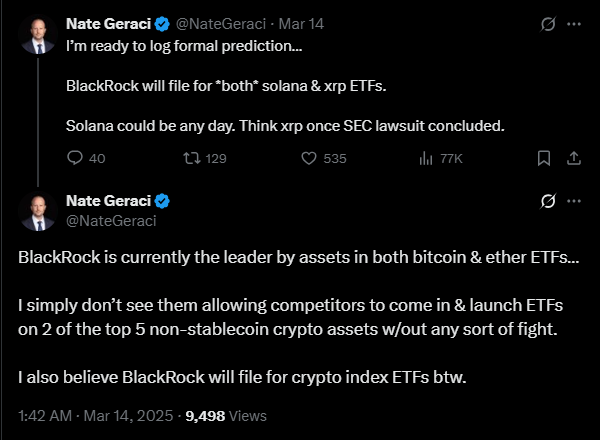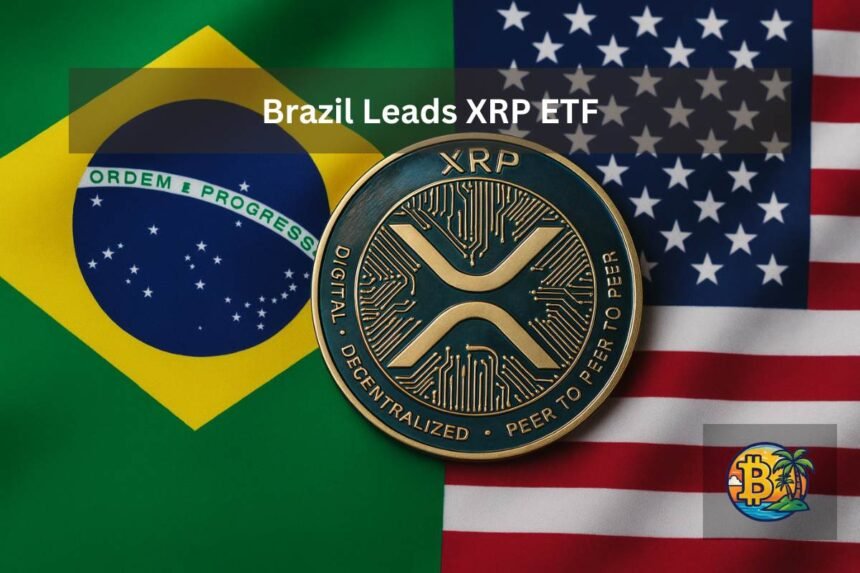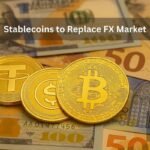Key Insights
- Brazil has just made history by launching the world’s first spot XRP exchange-traded fund (ETF).
- The XRPH11 from Hashdex is the first of its kind not only in Brazil, but anywhere else in the world.
- Brazil’s regulatory agencies have shown a willingness to embrace crypto and its investment vehicles.
- Brazil is pushing forward with its crypto ambitions, while the United States continues to tiptoe around regulatory red tape.
- Meanwhile, BlackRock has shown relatively weak appetite for entering the XRP ETF race.
Brazil has just made history by launching the world’s first spot XRP exchange-traded fund (ETF).
This new product is called XRPH11 and offers investors new ways to access one the most popular cryptocurrencies on the market.
This new fund is managed by Hashdex and officially began trading on Brazil’s B3 stock exchange on 25 April.
This marks a major jump forward, not only for XRP, but for the crypto industry as a whole.
Breaking New Ground with XRPH11
The XRPH11 from Hashdex is the first of its kind not only in Brazil, but anywhere else in the world.
Even though Hashdex has filed several applications for crypto ETFs in the U.S., regulatory bottlenecks have pushed the firm to focus more on Brazil, which has been much more welcoming towards crypto than most other countries.
The recent ETF approval came in February, and led to the product going live in less than three months.
This pace stands in stark contrast with the regulatory sluggishness the US is known for.
So far, the XRPH11 is part of Hashdex family of mono-asset funds which includes offerings like BITH11 (Bitcoin), ETHE11 (Ethereum) and SOLH11 (Solana).
According to comments from Hashdex’s Chief Investment Officer Samir Kerbage, these products will target institutional investors looking to diversify into digital assets through the stock markets.
The fund is committed to investing at least 95% of its assets in XRP. It will do so either directly or through futures contracts and other means related to the Nasdaq XRP Reference Price Index.
Its management fees are also competitive, and require investors paying a maximum of 0.7% annually, along with an extra 0.1% custodian fee (with no structuring fee).
Brazil’s Crypto-Friendly Environment
Brazil’s regulatory agencies, especially the Brazilian Securities and Exchange Commission (CVM), have shown a willingness to embrace crypto and its investment vehicles.
The agency recently approved the world’s first Solana ETF, in a show If its interest in setting up Brazil as a world leader in crypto finance.
Even though the Solana ETF initially lagged in interest, the XRPH11 could play out differently, considering XRP’s much larger market cap and more established user base.
At the time of the XRPH11 launch, the cryptocurrency held a market cap of around $125 billion.
This makes it the third-largest asset on the crypto market, after Bitcoin and Ethereum (asides from stablecoins).
This scale along could be a major factor that drives its trading volumes.
U.S. Still Lags Behind
Brazil is pushing forward with its crypto ambitions, while the United States continues to tiptoe around regulatory red tape.
XRP, interestingly, has American roots. This, combined with Ripple’s partial victories in the multi-year legal battle with the SEC hasn’t been enough to see a spot ETF emerge for the cryptocurrency.
This gap between both countries is especially glaring, considering recent shifts in the country’s politics.
President Donald Trump’s administration had promised to make the U.S. the “crypto capital of the world,” and this move has sparked a new wave of applications from major players like Grayscale and Franklin Templeton.
However, as of now, Polymarket bets only have a 73-74% chance of a U.S. XRP ETF being approved by the end of the year.
The sluggishness of this progress has not only been a source of frustration for the crypto industry, it also shows the difference between Brazil the United States.
Where Does BlackRock Stand?
Interestingly, the world’s largest asset manager, BlackRock has shown relatively weak appetite for entering the XRP ETF race.
BlackRock has enjoyed massive success with its Bitcoin and Ethereum ETFs, with over $30 billion and $1 billion in both assets respectively.
However, it has yet to show any decisive interest in launching an XRP ETF.

According to industry experts, there might be two reasons for this.
To start with, institutional demand for XRP has not yet reached the critical mass that BlackRock tends to wait for before jumping in.
Bitwise CIO Matt Hougan recently stated that even though interest in XRP is rising, it is still relatively meager, compared to Bitcoin or Ethereum’s dominance.
Second, BlackRock is especially wary of regulatory risks.
The firm continues to watch how the SEC responds to competitors like Grayscale and Franklin Templeton.
Moreover, there are still some uncertainties within the ongoing Ripple-SEC lawsuit, not to mention the incident of a fake XRP ETF filing in 2023 that caused brief chaos in the market.

ETF expert Nate Geraci has pointed out that BlackRock seems content to sit back and monitor things before jumping in when the market is more stable.
What XRPH11 Means for XRP
The success or failure of XRPH11 could have some ripple effects (no pun intended) far beyond Brazil.
A strong performance of this product could encourage other countries to approve XRP ETF approvals and expand their options for institutional players.
It could also improve XRP’s position as a major asset, alongside Bitcoin and Ethereum, especially if the US market follows suit.
However, there are reasons to be cautious with this arrangement.
If XRPH11 performs underwhelmingly like the Brazilian Solana ETF, it could mean that not even regulatory wins are enough to boost altcoin interest.
Some worrying signs are already showing up with XRP’s slow price movements even after the launch, and there might be some market hesitation to come.
Still, even a slow start would be valuable as investors (and regulators) attempt to watch how mono-asset altcoin ETFs perform in real-world settings.
Overall, as investors watch this new ETF for performance, pressure continues to mount on the US to push its plans forward.
Whether or not the US follows suit remains to be seen.








